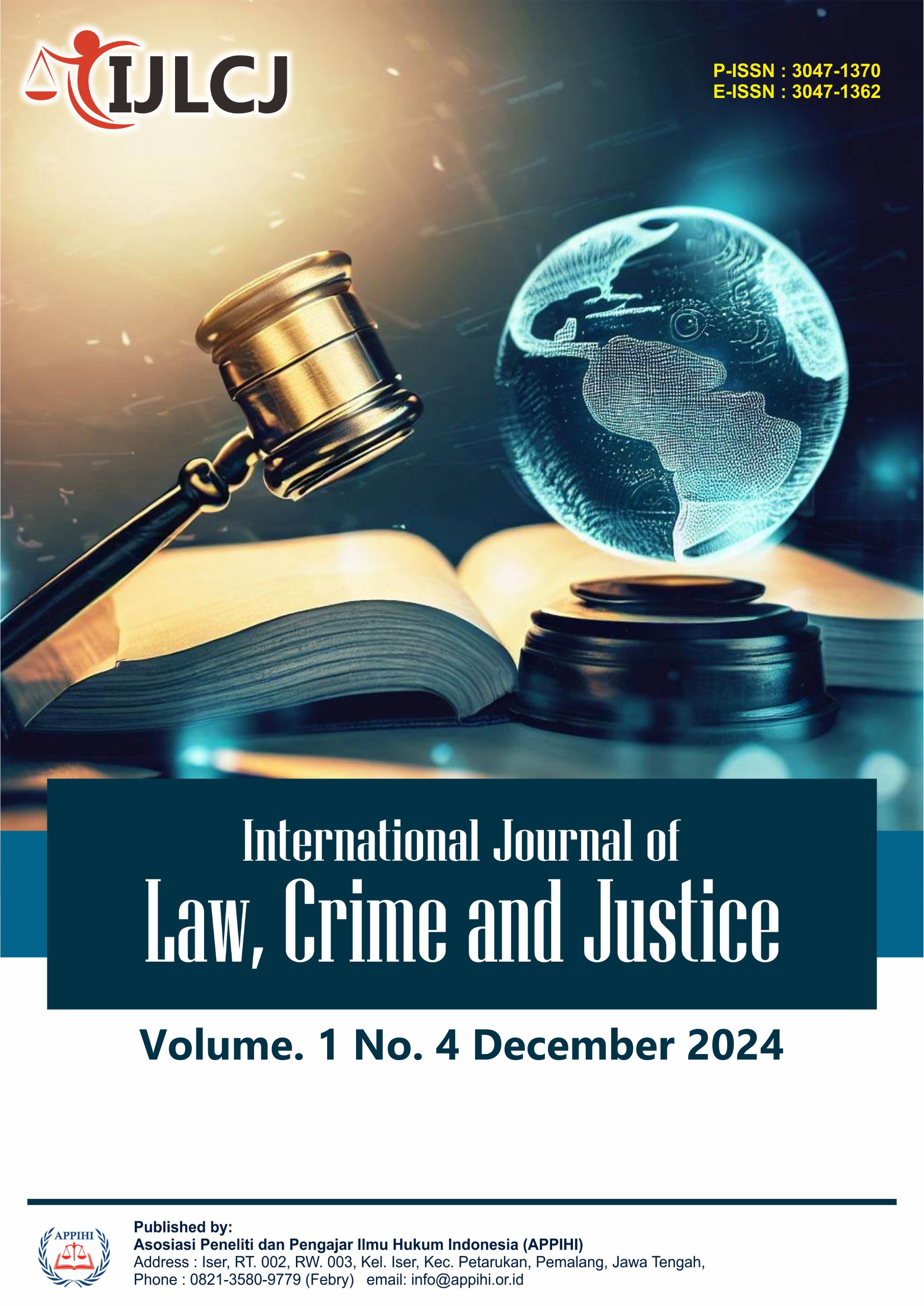The Validity of the Belis Marriage is Related yo the Right to Inherit Land in Hambapraing Village, East Sumba Regency
DOI:
https://doi.org/10.62951/ijlcj.v1i4.304Keywords:
Marriage, Belis, InheritanceAbstract
Because there is a shift in the meaning of belis from a cultural tradition to something that is considered a burden and burdensome for men as the party who gives belis, this also causes the giving of belis to not be carried out in full before the marriage takes place. So from this it is very good to examine if the belis is not fully implemented whether the heirs' rights for the heirs will be obtained. Rather than this, this study uses an empirical legal research method by using a conceptual approach. Where the source of data for this research is obtained through primary data obtained through the results of interviews, observations and documentation. Secondary data is obtained through applicable laws and regulations. The data source is then analyzed with description techniques and legal discovery techniques in the field. The result of this study is that if the marriage status of the belis that has not been paid in full in Hambraping village, then the man will be obliged to prepare land and land for the woman who is in the village which is usually called Laku Longgamai which means that the woman is not allowed to visit the man's house and is only allowed once a month if the woman returns to her biological parents' house, It is also not allowed to stay overnight and stay overnight.
Downloads
References
Andronikus Ndaparoka. (2022). PEMBELISAN ADAT DALAM PERKAWINAN ADAT SUMBA (Di Desa Mawo Dana, Kecamatan Wewewa Timur Kabupaten Sumba Barat Daya Provinsi Nusa Tnggara Timur). Jurnal Mitra Manajemen, 6(1), 22–38. https://doi.org/10.52160/ejmm.v6i1.580
Anggraeni, S. A., & Beding, B. M. (2003). Perempuan Sumba dan Belis. Lembaga Pro Millenio Center.
Dentis, Y. (2021). Quo Vadis, Belis Masyarakat Sikka Maumere. Ekspektasi: Jurnal Pendidikan Ekonomi, 5(2), 162–167. https://doi.org/10.37478/jpe.v5i2.819
Djaren, S. (1984). Pengantar Hukum Adat. Tarsito.
Kaunang, A., Dungga, W. A., & Bakung, D. A. (2022). Akibat Hukum Kawin Lari Berdasarkan Hukum Islam Dan UU Perkawinan (Studi Kasus Kec. Tolinggula) . Jurnal Ilmu Sosial, Humaniora Dan Seni, 1(1). https://doi.org/https://doi.org/10.47233/jishs.v1i2.710
Kleden, D. (2017). Belis dan Harga Seorang Perempuan Sumba (Perkawinan Adat Suku Wewewa, Sumba Barat Daya, NTT). Studi Budaya Nusantara, 1(1), 18–27. https://doi.org/10.21776/ub.sbn.2017.oo1.01.03
Lede, M., Bidaya, Z., & Anshori, Z. (2018). Tradisi Belis dalam Perkawinan Adat Suku Weelewo. CIVICUS : Pendidikan-Penelitian-Pengabdian Pendidikan Pancasila Dan Kewarganegaraan, 5(2), 20. https://doi.org/10.31764/civicus.v5i2.432
Ndjurumbaha, U. R. A., Suwitra, I. M., & Widiati, I. A. P. (2021). Adat Palai Ngandi di Kabupaten Sumba Timur di Tinjau dari Undang-undang Perkawinan. Jurnal Interpretasi Hukum, 2(3), 507–512. https://doi.org/10.22225/juinhum.2.3.4128.507-512
Nono, F. (2022). Belis: Sebuah Tradisi Perkawinan Suku Dawan. Journal Kerusso, 7(1), 39–50. https://doi.org/10.33856/kerusso.v7i1.182
Steven, C. D., & Yunanto, T. A. R. (2019). Pengaruh Belis Dalam Masyarakat Sumba. Insight : Jurnal Pemikiran Dan Penelitian Psikologi, 15(2), 204. https://doi.org/10.32528/ins.v15i2.1838
UTAMA, I. W. K. J., & WIRYANI, M. (2023). Independent Development Model for Village Land Asset Management In Segara Kodang by Sesetan Village. Protection: Journal Of Land And Environmental Law, 1(3), 198–206. https://doi.org/10.38142/pjlel.v1i3.851
Downloads
Published
How to Cite
Issue
Section
License
Copyright (c) 2024 International Journal of Law, Crime and Justice

This work is licensed under a Creative Commons Attribution-ShareAlike 4.0 International License.





